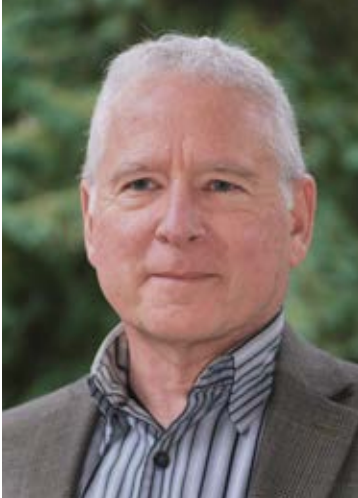Evan R. Williams Receives 2022 John B. Fenn Award for Distinguished Contribution in Mass Spectrometry
Evan R. Williams, a Distinguished Professor of Chemistry and Biophysics at the University of California, Berkeley, is the 2022 recipient of the ASMS John B. Fenn Award for Distinguished Contribution in Mass Spectrometry. Williams will receive the award at the 2022 ASMS Conference in Minneapolis, Minnesota, which takes place June 5–9. He will receive the award and deliver an award lecture on June 6 at 5:00 pm CST.
Evan R. Williams of the University of California, Berkeley

The ASMS Award for Distinguished Contribution in Mass Spectrometry honors the memory of John B. Fenn, who shared the 2002 Nobel Prize for the development of electrospray ionization. The award is conferred at the ASMS Annual Conference with the presentation of a $10,000 cash award, a recognition plaque, and the award lecture.
Williams is receiving the award for making pioneering contributions that have improved our fundamental understanding of ion chemistry in aqueous nanodrops both inside and outside the mass spectrometer. His work has had a tremendous impact and represents a cohesive and successful sustained effort to understand the chemistry occurring in aqueous solution during the transition in the electrospray process from bulk solution to individual or solvated ions.
Williams has taken advantage of nanodrop chemistry to do the following: 1) manipulate ion charging and desalting ions during the electrospray ionization process; 2) develop rapid mixing in electrospray droplets to investigate ultrafast chemistry (<1 to 100 microseconds) to track peptides and fast-folding proteins in the act of folding; 3) investigate how the organization of water around ions can pattern the hydrogen bonding network of water to long distance, and how water can affect the structure of ions; and 4) develop thermochemical methods, including blackbody infrared radiative dissociation and ion nanocalorimetry, to probe the thermochemistry of processes, such as electrochemical reductions in mass selected aqueous nanodrops.
This collective theme has influenced not just the field of mass spectrometry and ion chemistry but has also improved our understanding about the role of water on ion chemistry in solution, an outcome which impacts many areas ranging from biomolecule structure and folding to atmospheric aerosol chemistry.
Exploring Metabolite Alteration from Age-Related Macular Degeneration with UHPLC-MS/MS
February 19th 2025Exploring the alterations in metabolites of wet age-related macular degeneration (wAMD), metabolomic analysis was performed on the aqueous humor of 30 patients with wAMD receiving anti-vascular endothelial growth factor (anti-VEGF) treatments and 20 controls, via ultra-high performance liquid chromatography-tandem mass spectrometry (UHPLC-MS/MS).
The Next Frontier for Mass Spectrometry: Maximizing Ion Utilization
January 20th 2025In this podcast, Daniel DeBord, CTO of MOBILion Systems, describes a new high resolution mass spectrometry approach that promises to increase speed and sensitivity in omics applications. MOBILion recently introduced the PAMAF mode of operation, which stands for parallel accumulation with mobility aligned fragmentation. It substantially increases the fraction of ions used for mass spectrometry analysis by replacing the functionality of the quadrupole with high resolution ion mobility. Listen to learn more about this exciting new development.
Direct Analysis of Class 2 Residual Solvents Using Molecular Rotational Resonance Spectroscopy
February 19th 2025Molecular rotational resonance (MRR) spectroscopy operates in the microwave region, detecting transitions between pure rotational energy levels. Combined with adiabatic cooling, MRR produces highly selective spectra unique to each molecule’s atomic structure. Even slight changes in atomic position or mass result in distinct spectral differences, allowing MRR to directly analyze complex mixtures, including isomers, without chromatographic separation. This article presents a continuous headspace-MRR method for analyzing Class 2 residual solvents, including low-volatility solvents from Class 2 Mixture C. By evaluating solvents with diverse boiling points, the study demonstrates that MRR meets ICH and USP standards for most Class 2 and Class 3 solvents and half of Class 1 solvents.










